Maintaining leader role through timed lease mechanism
Continuous understanding of distributed systems design
On the one hand
基于定时的租约机制来保持leader角色
基于定时的租约机制来保持leader角色的设计思想是一种在分布式系统中确保高可用性和系统一致性的解决方法。
在分布式系统中,通常会有一个角色被选举为leader,负责协调和处理系统的操作。
然而,由于网络延迟、节点故障或其他原因,leader节点可能会不可用,可能导致系统的不一致性或停机。为了解决这个问题,可以引入租约机制。
租约机制基本思想是通过时间约束来维持leader角色。
具体来说,系统中的每个节点都可以向一个中心节点请求获得一个租约,租约的持有时间是有限的。当一个节点获得了租约后,它就成为了leader,并可以负责处理系统的操作。
为了保持租约的有效性,节点需要定期向中心节点发送心跳信号来更新租约。如果一个节点在一段时间内没有发送心跳信号,中心节点将认为该节点失去了租约,并重新进行选举。
通过租约机制,可以解决系统在leader节点失效时的故障转移问题。当一个leader节点失效时,其他节点可以竞选新的leader,并且只有一个节点能够获得租约。
这样可以确保系统一致性和可用性。
In Spanner中的设计说明
在Spanner中,为了保持Leader角色的连续性和可靠性,采用了基于定时的租约机制。这个机制确保了系统中只有一个Leader,并且在Leader失效时能够迅速选举出新的Leader。
下面是Spanner中基于定时的租约机制的设计思想:
- 候选者选举:候选者是一组被选定的节点,他们有资格成为Leader。当Leader失效时,这些候选者之间进行选举,通过选举出一个新的Leader来维持系统的连续性。
- 租约的获取:Leader角色通过使用租约来保持其领导地位。租约是一种授权,它授予一个节点在一段时间内称为Leader的权利。Leader定期续约以保持其地位。
- 租约的续约:Leader在租约即将过期时会向候选者发送续约请求。候选者通过接受续约请求来确认Leader的地位。这样,Leader可以持续地保持其地位并继续发挥其职责。
- 租约的失效处理:如果一个Leader无法续约或者租约过期,那么它将被认为已失效。此时,候选者中的一个节点将被选举为新的Leader。这个过程通常很快,以确保在Leader失效后系统尽快恢复。
通过基于定时的租约机制,Spanner能够在Leader失效时快速选举新的Leader,并保持系统的连续性和可靠性。这种机制在分布式系统中极为重要,能够确保系统的高可用性和稳定性。
租约机制在分布式系统中的设计思想和解决的问题包括:
基于定时的租约机制是一种常用的方法,用于解决分布式系统中保持leader角色、高可用性和一致性的问题
- 高可用性:通过选举新的leader来保证系统在leader节点失效时的持续可用性。
- 系统一致性:通过租约机制来防止多个节点同时进行操作,保证系统的一致性。
- 故障转移:当leader节点失效时,能够快速选举新的leader,使系统能够继续正常运行。
- 防止脑裂问题:租约机制可以限制只有一个节点成为leader,避免多个节点同时负责处理系统操作导致的冲突和不一致性。
租约机制在分布式系统中的好处和坏处
基于定时的租约机制可以帮助保持leader角色的好处和坏处如下所示:
好处:
- 高可用性:定时租约机制可以确保在leader节点出现故障或失去连接时,系统能够及时选举新的leader节点。这样可以保持系统的高可用性,避免服务中断。
- 数据一致性:定时租约机制可以保证在任何时间点上只有一个leader节点。这样可以避免多个leader节点同时对数据进行修改,确保数据的一致性和正确性。
- 提高性能:只有一个leader节点负责处理客户端的请求和事务处理,而其他节点则作为follower节点进行数据同步。这样可以避免冲突和竞争,提高系统的性能和吞吐量。
坏处:
- 单点故障:当leader节点出现故障或失去连接时,系统需要选举新的leader节点。在选举期间,系统可能会出现服务不可用或性能下降的情况。
- 延迟增加:定时租约机制需要进行leader选举,这会增加系统的延迟。特别是在网络条件较差或选举过程较长的情况下,延迟可能会更高。
- 实现复杂:定时租约机制需要实现一套复杂的算法和协议来进行leader选举和租约管理。这需要额外的工作和资源,增加系统的开发和维护成本。
总结来说,基于定时的租约机制可以带来高可用性、数据一致性和性能提升的好处,但也会面临单点故障、延迟增加和实现复杂的坏处。
在设计和实施时,需要综合考虑系统的需求和性能要求,权衡这些利弊,并选择适合的机制。
TrueTime API为什么值得信赖
TrueTime API是Google Spanner数据库系统中的一个重要组件,它是一种高精度的时钟同步机制。TrueTime API提供了一种可信赖的时间服务,能够确保全球分布的Spanner节点之间的时间一致性。
TrueTime API值得信赖的原因包括以下几点:
- 全球时钟同步:TrueTime API使用了全球性的时间同步协议,并与GPS和原子钟等可靠的时间源进行校准。这使得Spanner节点能够获得高度同步的时间信息,保证全球范围内的时间一致性。
- 客观的时间范围:TrueTime API不仅提供了当前时间的值,还提供了一个时间范围。这个时间范围表示了可能的时间偏移量,即节点间时间的不确定性。Spanner在数据复制和事务处理中会考虑到这个时间范围,以确保数据的顺序性和一致性。
- 一致性保证:Spanner使用TrueTime API来保证分布式事务的一致性。TrueTime API能够确保在分布式事务中的各个节点使用近似相同的时间戳,以实现可串行化的一致性级别。这样可以避免数据冲突和不一致的问题。
- 容错性设计:TrueTime API在设计上考虑了网络延迟和节点故障等因素。它提供了弹性时间范围,以容忍节点间的时钟偏移和重启等情况。这使得Spanner能够在节点失效或网络异常的情况下仍然保持可用性和数据一致性。
On the other hand
Maintaining leader role through timed lease mechanism
The design idea of maintaining the leader role through the timed lease mechanism is a solution for ensuring high availability and consistency in distributed systems. In a distributed system, there is typically a role elected as the leader, responsible for coordinating and handling operations in the system.
However, due to network latency, node failures, or other reasons, the leader node may become unavailable, which can lead to inconsistency or downtime in the system. To address this problem, the lease mechanism can be introduced.
The basic idea of the lease mechanism is to maintain the leader role through a time constraint. Specifically, each node in the system can request a lease from a central node, with a limited duration. When a node acquires the lease, it becomes the leader and can handle operations in the system.
To maintain the validity of the lease, nodes need to periodically send heartbeat signals to the central node to renew the lease. If a node fails to send a heartbeat signal within a certain period, the central node will consider it to have lost the lease and initiate a new election.
Through the lease mechanism, the problem of failover when the leader node fails can be solved. When a leader node fails, other nodes can compete to become the new leader, and only one node can acquire the lease. This ensures system consistency and availability.
Design in Spanner
In Spanner, the timed lease mechanism is used to maintain the continuity and reliability of the leader role. This mechanism ensures that there is only one leader in the system and quickly elects a new leader in case of leader failure.
Here are the design ideas for the timed lease mechanism in Spanner:
- Candidate election: Candidates are a set of nodes eligible to become the leader. When the leader fails, an election is conducted among these candidates to select a new leader and maintain the continuity of the system.
- Lease acquisition: The leader role is maintained by using leases. A lease is a authorization that grants a node the right to be the leader for a certain period of time. The leader periodically renews the lease to maintain its role.
- Lease renewal: When the lease is about to expire, the leader sends lease renewal requests to the candidates. Candidates accept the renewal requests to acknowledge the leader’s role. This allows the leader to continue holding its role and fulfilling its functions.
- Lease expiration handling: If a leader fails to renew the lease or the lease expires, it is considered to have lost the lease. At this point, one of the candidates is elected as the new leader. This process usually happens quickly to ensure a fast recovery after leader failure.
Through the timed lease mechanism, Spanner can quickly elect a new leader when the current leader fails and maintain the continuity and reliability of the system. This mechanism is crucial in distributed systems to ensure high availability and stability.
Problems solved by the lease mechanism in distributed systems:
The lease mechanism based on timed leases is a commonly used method to address the following problems in distributed systems:
- High availability: It ensures the continuous availability of the system by quickly electing a new leader when the current leader fails.
- System consistency: The lease mechanism prevents multiple nodes from simultaneously operating on the system, ensuring consistency and correctness of the data.
- Failover: When a leader node fails, a new leader can be quickly elected, allowing the system to continue functioning normally.
- Prevention of split-brain problems: The lease mechanism limits only one node to become the leader, avoiding conflicts and inconsistencies caused by multiple nodes simultaneously handling system operations.
Benefits and drawbacks of the lease mechanism in distributed systems:
The benefits and drawbacks of the lease mechanism, used to maintain the leader role, include:
Benefits:
- High availability: The timed lease mechanism ensures the continuous availability of the system by quickly electing a new leader when the current leader fails or becomes unreachable. This avoids service interruptions.
- Data consistency: The lease mechanism guarantees that at any given time, there is only one leader node. This prevents multiple leader nodes from simultaneously modifying data, ensuring consistency and correctness of the data.
- Performance improvement: With only one leader node handling client requests and transaction processing, while other nodes act as followers for data synchronization, conflicts and contention can be avoided, improving system performance and throughput.
Drawbacks:
- Single point of failure: When the leader node fails or becomes unreachable, the system needs to elect a new leader. During the election, the system may experience service unavailability or performance degradation.
- Increased latency: The timed lease mechanism requires leader election, which can introduce additional latency to the system. Especially in cases of poor network conditions or long election processes, the latency may be higher.
- Complexity of implementation: The timed lease mechanism requires the implementation of a complex set of algorithms and protocols for leader election and lease management. This involves additional work and resource requirements, increasing the development and maintenance costs of the system.
In summary, the lease mechanism based on timed leases can bring benefits such as high availability, data consistency, and performance improvement, but it also has drawbacks such as single point of failure, increased latency, and complexity of implementation. When designing and implementing it, it is necessary to consider the system’s requirements and performance needs, carefully balancing these pros and cons, and choose a suitable mechanism.
Why is the TrueTime API trustworthy?
The TrueTime API is an important component of the Google Spanner database system. It is a high-precision clock synchronization mechanism that provides a reliable time service, ensuring time consistency among Spanner nodes distributed globally.
The TrueTime API is trustworthy for the following reasons:
- Global clock synchronization: The TrueTime API uses global time synchronization protocols and is calibrated with reliable time sources such as GPS and atomic clocks. This enables Spanner nodes to obtain highly synchronized time information, ensuring time consistency globally.
- Objective time range: The TrueTime API provides not only the current time value but also a time range. This time range represents the potential time offsets, indicating the uncertainty of time between nodes. Spanner takes into account this time range in data replication and transaction processing to ensure the order and consistency of data.
- Consistency guarantee: Spanner uses the TrueTime API to ensure the consistency of distributed transactions. The TrueTime API can ensure that the timestamps used by various nodes in a distributed transaction are approximately the same, achieving serialization isolation level. This avoids data conflicts and inconsistencies.
- Fault-tolerant design: The TrueTime API takes into consideration factors such as network latency and node failures. It provides an elastic time range to tolerate clock offsets and node restarts. This allows Spanner to maintain availability and data consistency even in the event of node failures or network anomalies.
相关文章:

Maintaining leader role through timed lease mechanism
Continuous understanding of distributed systems design On the one hand 基于定时的租约机制来保持leader角色 基于定时的租约机制来保持leader角色的设计思想是一种在分布式系统中确保高可用性和系统一致性的解决方法。 在分布式系统中,通常会有一个角色被选举…...

Mysql InnoDB引擎 的hash索引
Mysql InnoDB引擎不支持hash索引,但是在内存结构中有一个自适应hash索引,来提高查询性能 当设置hash索引时会自动转换成btree索引 查一下mysql官方文档:https://dev.mysql.com/doc/refman/5.7/en/create-index.html innodb_adaptive_hash_i…...

23年PMP考试如何备考?
接下来我要分享的备考建议分为三个部分,考试相关、备考期间注意和刷题建议。 1、PMP考试相关 PMP考试时间一定不能忘记,要密切关注,或许会出现延期的情况。考试教材现在是第七版教材,建议买一本或者用pdf电子版打印出来…...
)
mysql数据库增量备份方案、备份计划(InsCode AI 创作助手)
一、备份计划 以下是MySQL数据库增量备份的一般计划: 创建完整备份:在自动备份计划开始前,先创建一次完整备份。这个备份将包含所有数据和表结构。保存增量备份:在每次备份计划完成后,保存增量备份。这个备份将包含从…...
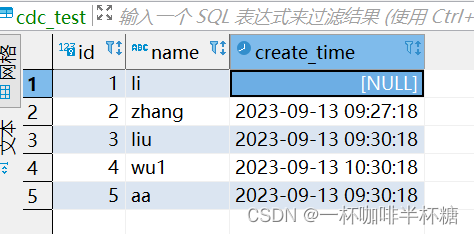
【Flink】FlinkCDC获取mysql数据时间类型差8小时时区解决方案
1、背景: 在我们使用FlinkCDC采集mysql数据的时候,日期类型是我们很常见的类型,但是FlinkCDC读取出来会和数据库的日期时间不一致,情况如下 FlinkCDC获取的数据中create_time字段1694597238000转换为时间戳2023-09-13 17:27:18 而数据库中原始数据如下,并没有到下午5点…...

Javas | DecimalFormat类、BigDecimal类、Random类
目录: 1.DecimalFormat类2.BigDecimal类3.Random类4.需求:编写程序,生成5个不重复的随机数 1.DecimalFormat类 DecimalFormat 是 NumberFormat 的一个具体子类,用于格式十进制数字。 /*** 关于数字的格式化*/ public class Decima…...

机器学习 实战系列 总目录
1、机器学习实战-系列教程1:线性回归入门教程(项目实战、原理解读、源码解读) 机器学习实战-系列教程1:线性回归入门教程(项目实战、原理解读、源码解读) 2、机器学习实战-系列教程2:手撕线性回…...

机器学习——贝叶斯(三种分布)/鸢尾花分类分界图/文本分类应用
0、前言: 机器学习中的贝叶斯的理论基础是数学当中的贝叶斯公式。这篇博客强调使用方法,至于理论未作深究。机器学习中三种类型的贝叶斯公式:高斯分布(多分类)、多项式分布(文本分类)、伯努利分…...

SOLIDWORKS Composer位置关键帧的使用
SOLIDWORKS Composer是专业的SOLIDWORKS及3D文件处理的动画制作软件,作为SOLIDWORKS 产品线下的一个明星存在。 SOLIDWORKS Composer几乎可以处理任何SOLIDWORKS的模型文件并将之转化成可以动作的机械动画,可以引用在企业的网站、产品说明书以及工作指导…...

PostgreSQL 流复制搭建与维护
文章目录 前言1. 配置环境1.1 环境介绍1.2 主库白名单1.3 主库参数配置 2. 流复制搭建2.1 备份恢复2.2 创建复制用户2.3 参数修改2.4 启动并检查2.5 同步流复制2.6 同步复制级别 3. 流复制监控3.1 角色判断3.2 主库查看流复制3.3 延迟监控3.4 备库查询复制信息 前言 PostgreSQ…...

【Redis】关于过期数据清除的一些策略
这里要讨论的为过期的数据是如何被清除的,也就是网上常常讨论的过期清除策略。 需要注意的是,redis除了会对过期的数据进行淘汰,也可以通过对内存大小进行限制,并对超出内存限制后进行数据淘汰。此时淘汰的数据未必是过期的&…...

动态SQL
Mybatis框架的动态SQL技术是一种根据特定条件动态拼装SQL语句的功能,它存在的意义是为了解决拼接SQL语句字符串时的痛点问题。 1、if if标签可通过test属性的表达式进行判断,若表达式的结果为true,则标签中的内容会执行;反之标签…...
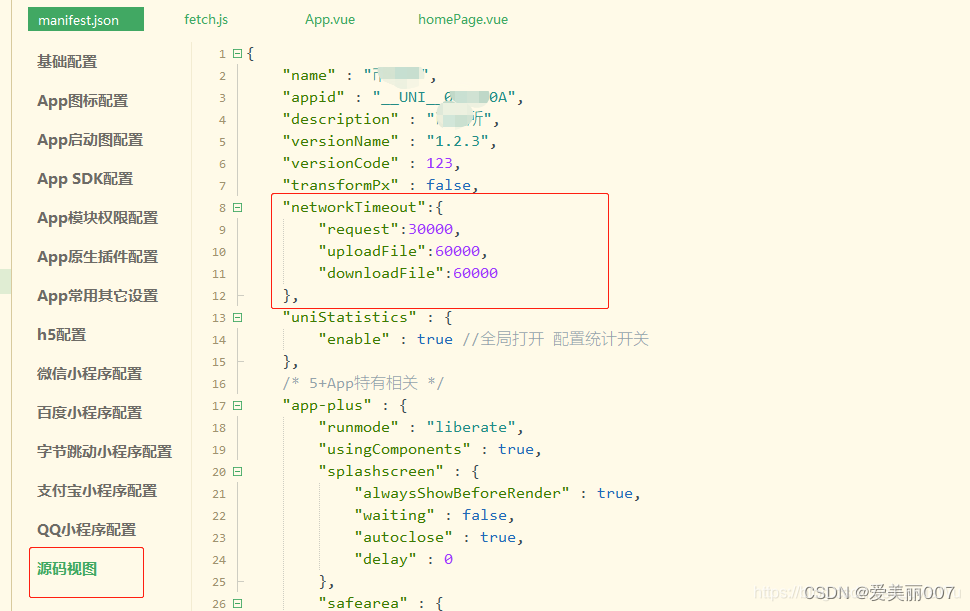
uniapp:OCR识别身份证上传原图失败,问题解决
1、上传普通图片成功 2、上传>4M | >5M图片失败检查:1、uni.uploadFile自身没有文件大小限制。然而,这仍然取决于你的应用程序所在的平台和存储空间容量。 2、上传照片后不在fail,在sucess 提交照片-3 {"data": "<h…...

shell循环和函数
目录 1.for循环2.while循环3.until循环4.函数 1.for循环 for循环是固定循环,也就是在循环时就已经知道需要进行几次的循环,有事也把for循环成为计数循环。for的语法如下两种: 语法一 for 变量 in 值1 值2 值3 …(可以是一个文件等)do程序do…...

京东详情api
简要描述 根据商品id获取详情数据 请求URL http://xxx.xxx.xxx.xxx:xxxx/jd.get.item 请求方式 get 请求Query参数 参数名示例值必选类型说明itemid100016034386是string商品idtokenadmin.api是string权限token 成功返回示例 部分数据展示: {"data&qu…...

MySQL最新版8.1.0安装配置教程
目录 目录 前言 安装流程图 1,MySQL数据库是什么? 2,下载zip压缩包 3,解压到要安装的目录 4,添加环境变量 4.1,找到环境变量 4.2,进行环境变量的添加 5.新建mysql 配置文件 6、安装mysql服务 7、初始化数据文件 8、启动mysql …...

5G试题_1
1、 全息技术属于对5G三大类应用场景网络需求中的哪一种?(A) A. 增强移动宽带 B. 海量大连接 C. 低时延高可靠 D. 低时延大带宽 2、 在5G时代,不同领域的不同设备大量接入网络,其实引用传统的组网方式和服务提供形式也…...

正规股票配资网站的三个明显特点分析
随着股票市场的快速发展,越来越多的投资者开始考虑使用股票配资来增加自己的资金流动性和收益率。然而,在选择股票配资网站时,投资者往往难以辨别哪些网站是正规的,哪些网站存在风险。因此,以下将分析正规股票配资网站…...

质疑苹果5G信号造假成为闹剧,反而将运营商置于尴尬境地
在iPhone15发布会处于热点之际,一位号称通信专家的人士指责iPhone的5G信号造假,一度闹得沸沸扬扬,导致舆论一开始都是质疑苹果造假,然而在知乎却有更多专业人士指出这位专家不了解5G技术,这个问题或许反而出在运营商身…...

vue 预览zip
ZIP的数据从接口传递数据流过来。解析数据流,并将zip的目录绑定到tree中。 1.引入插件jszip: yarn add jszip 2.在需要引用的页面引用: import JSZip from jszip 3. 实现代码 api(option).then((res)>{ // 接口获取zip的数据流 l…...
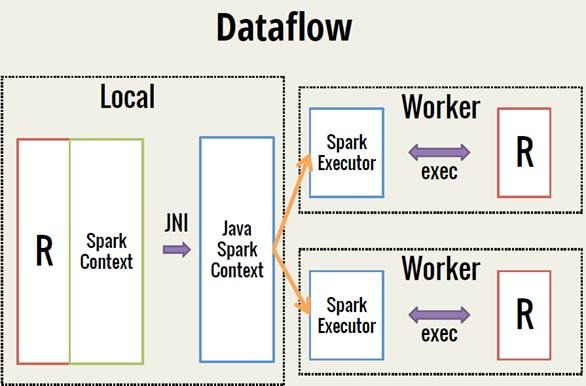
Spark 之 入门讲解详细版(1)
1、简介 1.1 Spark简介 Spark是加州大学伯克利分校AMP实验室(Algorithms, Machines, and People Lab)开发通用内存并行计算框架。Spark在2013年6月进入Apache成为孵化项目,8个月后成为Apache顶级项目,速度之快足见过人之处&…...
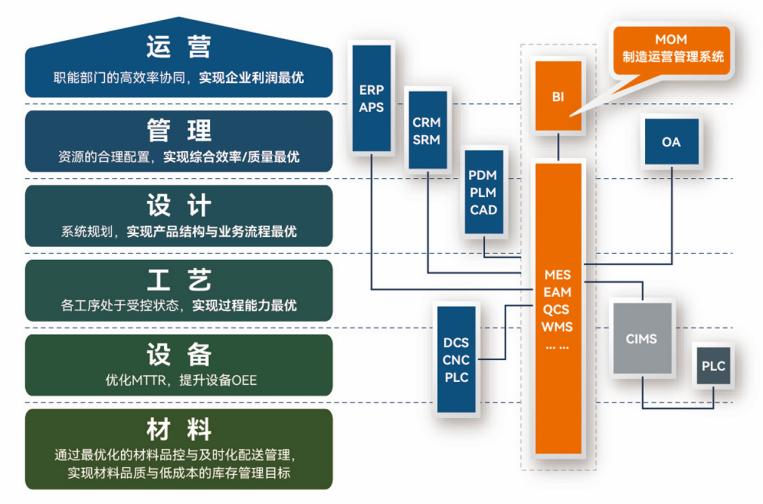
盘古信息PCB行业解决方案:以全域场景重构,激活智造新未来
一、破局:PCB行业的时代之问 在数字经济蓬勃发展的浪潮中,PCB(印制电路板)作为 “电子产品之母”,其重要性愈发凸显。随着 5G、人工智能等新兴技术的加速渗透,PCB行业面临着前所未有的挑战与机遇。产品迭代…...

srs linux
下载编译运行 git clone https:///ossrs/srs.git ./configure --h265on make 编译完成后即可启动SRS # 启动 ./objs/srs -c conf/srs.conf # 查看日志 tail -n 30 -f ./objs/srs.log 开放端口 默认RTMP接收推流端口是1935,SRS管理页面端口是8080,可…...

ServerTrust 并非唯一
NSURLAuthenticationMethodServerTrust 只是 authenticationMethod 的冰山一角 要理解 NSURLAuthenticationMethodServerTrust, 首先要明白它只是 authenticationMethod 的选项之一, 并非唯一 1 先厘清概念 点说明authenticationMethodURLAuthenticationChallenge.protectionS…...

【决胜公务员考试】求职OMG——见面课测验1
2025最新版!!!6.8截至答题,大家注意呀! 博主码字不易点个关注吧,祝期末顺利~~ 1.单选题(2分) 下列说法错误的是:( B ) A.选调生属于公务员系统 B.公务员属于事业编 C.选调生有基层锻炼的要求 D…...

【碎碎念】宝可梦 Mesh GO : 基于MESH网络的口袋妖怪 宝可梦GO游戏自组网系统
目录 游戏说明《宝可梦 Mesh GO》 —— 局域宝可梦探索Pokmon GO 类游戏核心理念应用场景Mesh 特性 宝可梦玩法融合设计游戏构想要素1. 地图探索(基于物理空间 广播范围)2. 野生宝可梦生成与广播3. 对战系统4. 道具与通信5. 延伸玩法 安全性设计 技术选…...
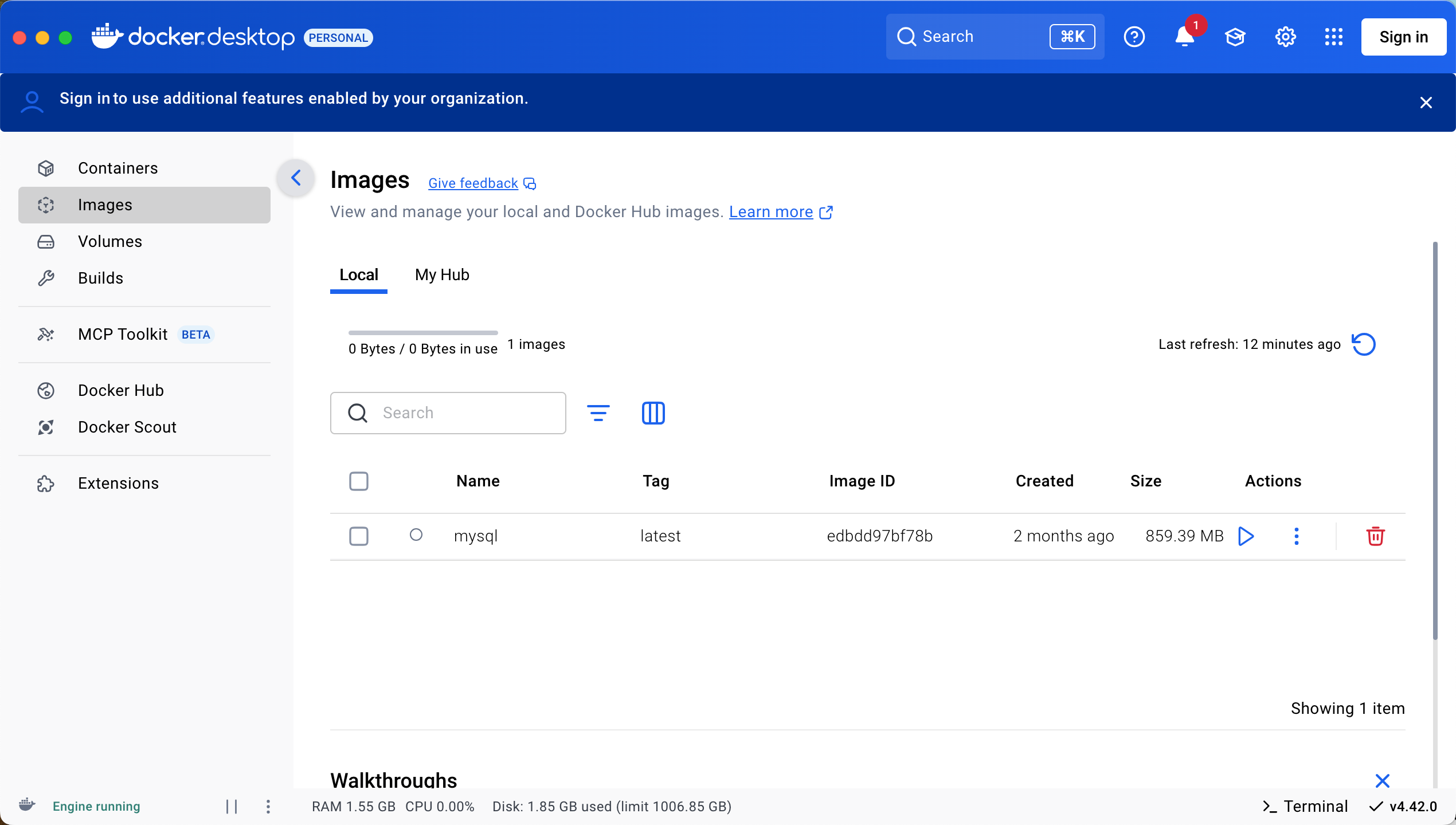
Docker 本地安装 mysql 数据库
Docker: Accelerated Container Application Development 下载对应操作系统版本的 docker ;并安装。 基础操作不再赘述。 打开 macOS 终端,开始 docker 安装mysql之旅 第一步 docker search mysql 》〉docker search mysql NAME DE…...

uniapp 字符包含的相关方法
在uniapp中,如果你想检查一个字符串是否包含另一个子字符串,你可以使用JavaScript中的includes()方法或者indexOf()方法。这两种方法都可以达到目的,但它们在处理方式和返回值上有所不同。 使用includes()方法 includes()方法用于判断一个字…...

关于uniapp展示PDF的解决方案
在 UniApp 的 H5 环境中使用 pdf-vue3 组件可以实现完整的 PDF 预览功能。以下是详细实现步骤和注意事项: 一、安装依赖 安装 pdf-vue3 和 PDF.js 核心库: npm install pdf-vue3 pdfjs-dist二、基本使用示例 <template><view class"con…...

前端调试HTTP状态码
1xx(信息类状态码) 这类状态码表示临时响应,需要客户端继续处理请求。 100 Continue 服务器已收到请求的初始部分,客户端应继续发送剩余部分。 2xx(成功类状态码) 表示请求已成功被服务器接收、理解并处…...
